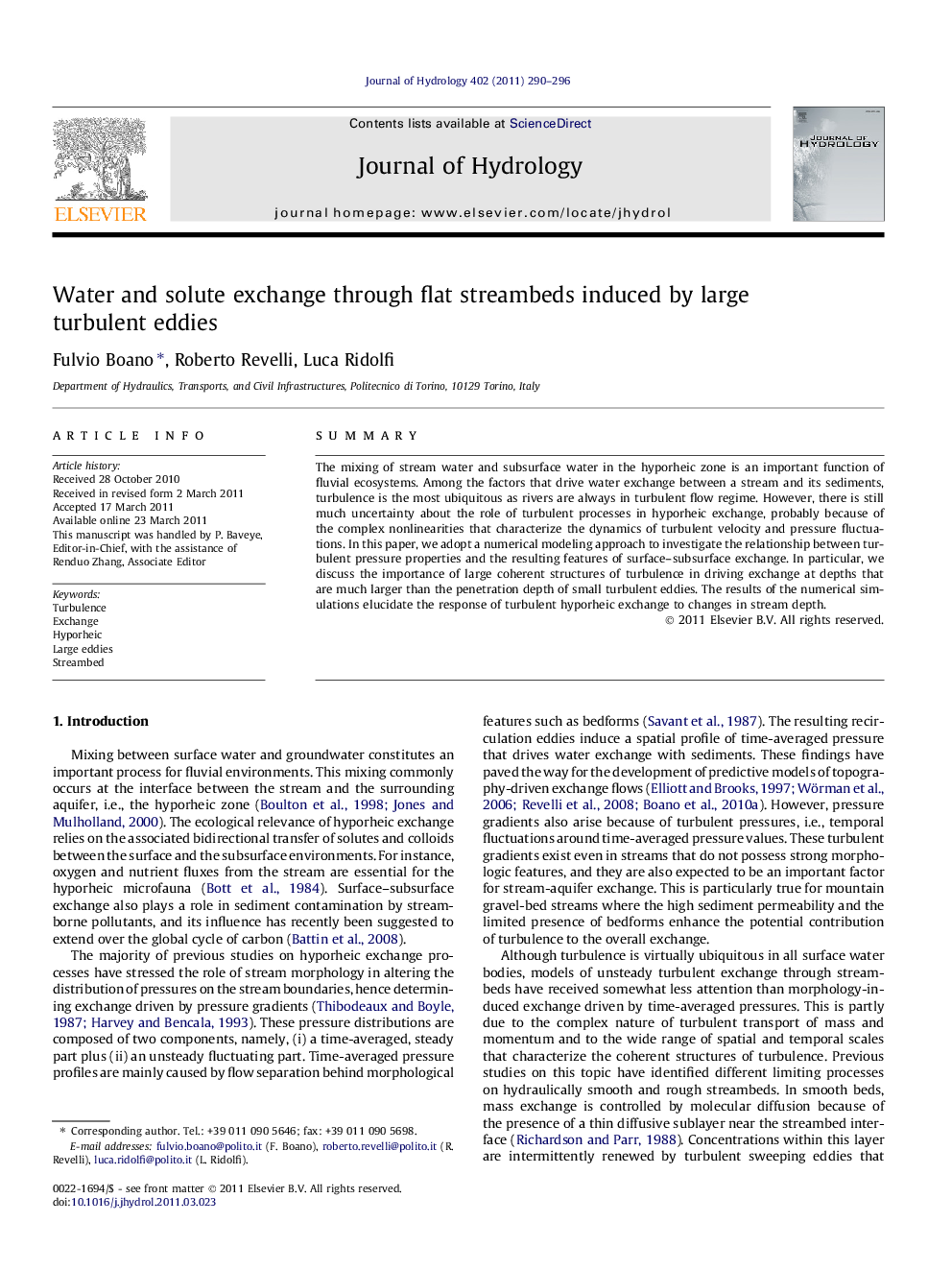| Article ID | Journal | Published Year | Pages | File Type |
|---|---|---|---|---|
| 4577529 | Journal of Hydrology | 2011 | 7 Pages |
SummaryThe mixing of stream water and subsurface water in the hyporheic zone is an important function of fluvial ecosystems. Among the factors that drive water exchange between a stream and its sediments, turbulence is the most ubiquitous as rivers are always in turbulent flow regime. However, there is still much uncertainty about the role of turbulent processes in hyporheic exchange, probably because of the complex nonlinearities that characterize the dynamics of turbulent velocity and pressure fluctuations. In this paper, we adopt a numerical modeling approach to investigate the relationship between turbulent pressure properties and the resulting features of surface–subsurface exchange. In particular, we discuss the importance of large coherent structures of turbulence in driving exchange at depths that are much larger than the penetration depth of small turbulent eddies. The results of the numerical simulations elucidate the response of turbulent hyporheic exchange to changes in stream depth.
► Turbulent pressure fluctuations drive stream water into stream sediments. ► Exchange with deep sediments is dominated by the largest turbulent structures. ► Depths of exchange and residence times increase with increasing stream depth. ► Sediment dispersivity slightly reduces residence times of exchanged water.
